- Author Miguel Ramacey [email protected].
- Public 2023-12-17 06:11.
- Last modified 2025-01-24 21:21.
Where does the history of this great Christian shrine lead? What do we know about altar crosses? What are they like?
It should be noted right away that brass altar crosses are most often used. But there may be others, depending on the material and inlay. For example, at services you can often see wooden crosses on the altar.
What should be on the altar in preparation for the episcopal service? The Gospel, the antimension and the altar cross should be on the Holy Altar.
In general, there should be two crosses, and they differ from each other in external decoration. That cross, which is finished better, is placed at the Liturgy on the left side of the primate. At the all-night vigil, the altar cross should be on the right hand of the priest.
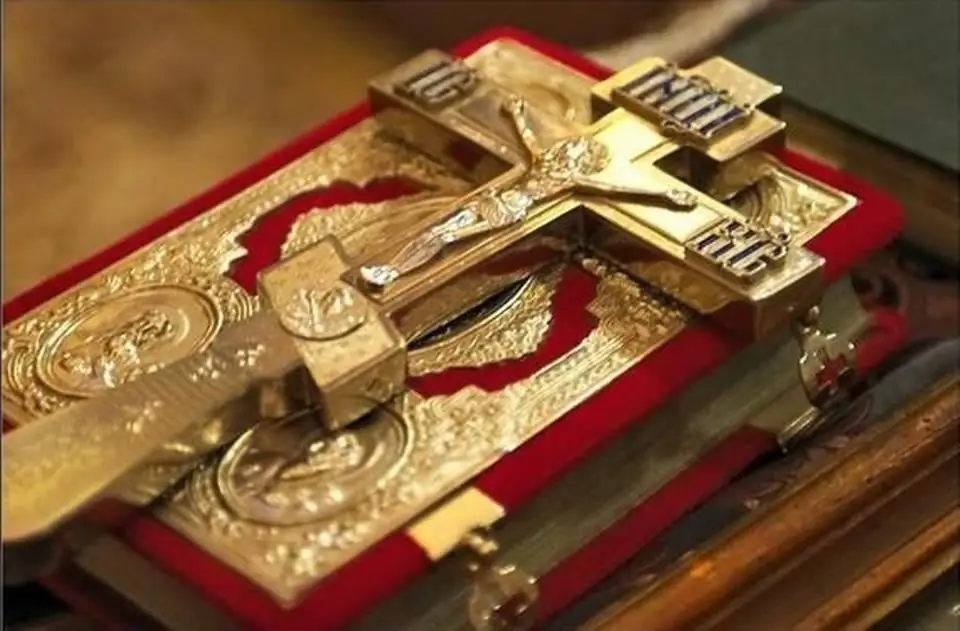
The history of the cross
During the period of the Old Testament church, it should be noted, it consisted mainly of Jews. It is a known fact that at that time they did not use lethal torture through crucifixion. According to their custom, the execution could take place in severalways: a person was stoned to death, his head was cut off with a sword, burned or hung on a tree. Saint Demetrius of Rostov explains the last method of execution with words from the Old Testament that everyone hanging on a tree will be cursed.
Only according to the pagan Greco-Roman tradition, there was a cross execution. The Jewish people knew it just a few decades after the birth of Christ, when the Romans crucified Antigonus, the last legitimate king of the Jews, on the cross. Therefore, there is no mention of the cross as a weapon of execution in the Old Testament texts.
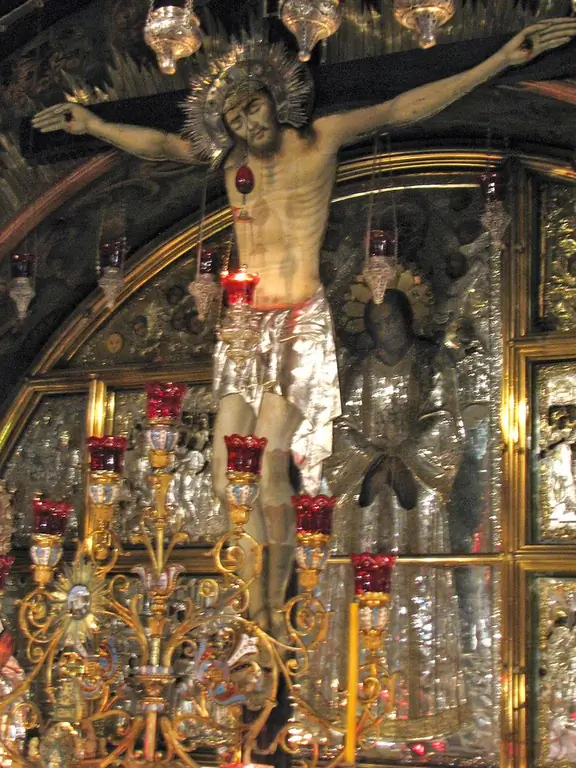
Symbols on the cross
The Altar Cross as a symbol of the Christian faith is used by the Russian and Serbian Orthodox Churches. In addition to the main horizontal bar, it contains two more. The top one is a symbolized tablet, which has the inscription abbreviated to capital letters INRI or INCI (“Jesus of the Nazarene, King of the Jews”), as well as the word NIKA, which means “Conqueror”.
The bottom bar is a support for the feet of Jesus Christ. It looks like an oblique crossbar and is a symbol that weighs human sins and virtues, as a "measure of the righteous." This crossbar is tilted to the left and symbolizes the penitent thief, who was crucified on the cross to the right of Christ. And that robber, who was to the left of the savior, only aggravated his fate by blaspheming the Lord and immediately went to hell.
The letters on the cross IC XC represent a Christogram symbolizing the name of Jesus Christ. Downstairs ChristianThe cross can also depict the skull of a fallen man - Adam - with the bones of his descendants. According to ancient legend, the remains of the first people Adam and Eve were buried at the place where Jesus Christ was crucified - Golgotha. It is believed that in this way the original sin of Adam and all his descendants was washed away by the blood of the crucified Lord.
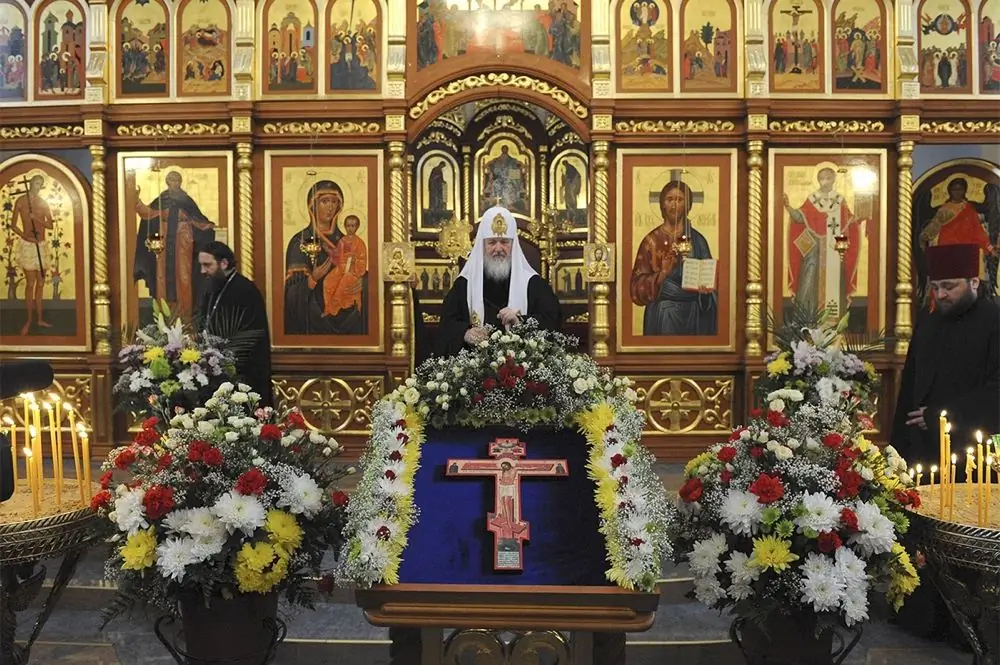
Veneration of the Cross
It is by the cross that the Christian church is recognized. Believers overshadow themselves with it, it rises above every church, reminds of the sufferings of Jesus Christ on the cross, who came to save all mankind. It was through the innocently shed blood of the Savior that people had the opportunity to repent and atone for their sins. The cross is their weapon to help them get through this.
In the New Testament, the theme of the cross occupies a major position. The Holy Fathers of the Church dedicated many of their spiritual works to her. In the 4th century, in his reflections, Cyril of Jerusalem pointed out that every action of Christ is the praise of our church, and the cross is the praise of praises.
In the Russian Orthodox Church (ROC) there are periods dedicated to the cross - the Ex altation and remembrance of the miraculous Life-Creating Cross and the Holy Week. Since ancient times, in ancient church rites, when glorifying the Holy Cross, the priest raised the cross above his head and turned it to all cardinal points.
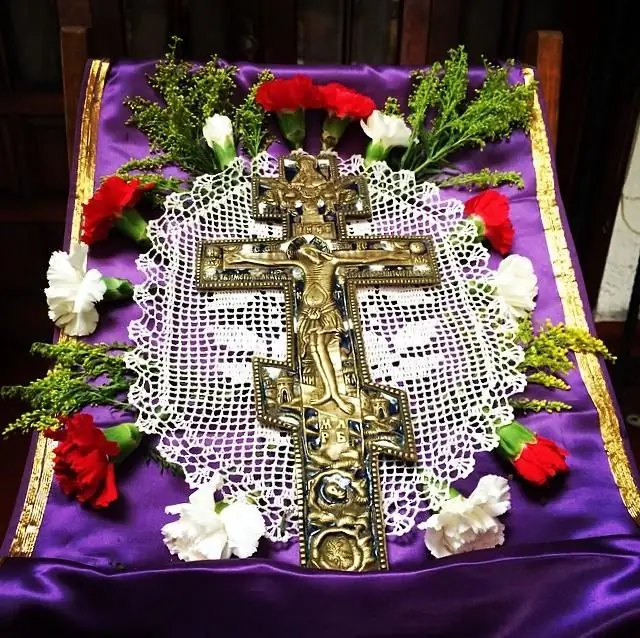
How the Cross of the Lord was found and recognized
In 70 AD, Emperor Titus destroyed Jerusalem, leaving no stone unturned. Hadrian became the next emperor. By his orders, the holy places where Jesus Christ was crucified and buried were destroyed and littered so that Christians would forget them once and for all, as they came to worship their God in these places.
Only during the reign of Emperor Constantine (in 326) were the Life-Giving Cross and the Holy Sepulcher found.
Fighting with rivals, he saw a cross in the sky, on which was the inscription: "Sim win." In search of Palestine, he sent his mother, Elena. Thanks to her and the Jerusalem Patriarch Macarius, the cave of the Holy Sepulcher and three crosses next to it were discovered. No one knew which of them was the Life-Giving One. At that time, a funeral was taking place near this place, and then Patriarch Macarius touched the dead man with one of the crosses, and he came to life, and then the sick woman was healed.
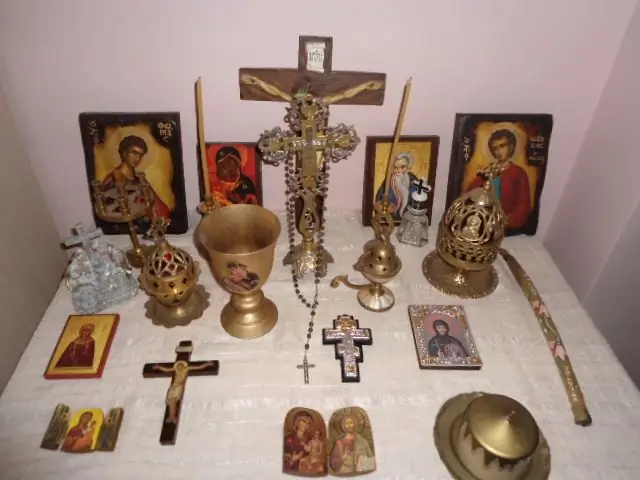
Finding the holy relic
This is how, thanks to the rulers, Jerusalem acquired its Christian appearance. Eighty churches were rebuilt, in which the Holy Cross became the main relic. Some time later, during the reign of the Byzantine emperor Phocas, the Cross was stolen by the Persians. Patriarch Zachary was also taken prisoner. Only 14 years later, the next emperor Heraclius was able to return the patriarch along with the shrine back. And when he went to the Church of the Resurrection in royal purple with a crown on his head and with the Life-Giving Cross in his hands, he saw an angel who stopped him and did not let him enter. He reminded him that Jesus Christ, before his death, was humiliated and humble before the Jews, who longed for his death. Then the emperor took off his vestments and,remaining in simple clothes, he brought the Cross into the temple.
Altar cross. "Sofrino"
"Sofrino" is a company that specializes in the manufacture of crosses and all kinds of church utensils. You can often find in antique shops or at auctions an altar cross of the 19th century of a rather complex technical design made of copper or bronze. The crucifix itself was made by hot casting and nailed to the cross itself.
The altar cross can be made of different metals using enamel, with gilding and a peculiar jewelry finish.
We must pay tribute to the heroic deeds of Russian priests who, during the years of the revolution and iconoclasm, saved crosses and icons from destruction.
In addition to the altar crosses, there are also worship crosses, to which, after the completion of the Liturgy, believers venerate. Then - "required". They are used for unction, funerals and other church ceremonies.
There may be other altar crosses in the temple, which the priests can also prepare on the altar to take them out at the Great Entrance.
Crosses may contain holy relics or consecrated objects.






